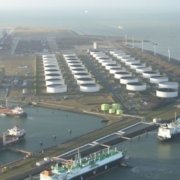Study says LNG inadequate for GHG reduction
Rolling out LNG infrastructure for shipping in Europe would cost US$22bn but only deliver a maximum 6% reduction in ship greenhouse gas emissions by 2050 compared to the replaced diesel, a new study has found.
These emissions savings would likely be cancelled out by the growth of maritime trade, even before possibly higher rates of methane slip are considered, according to the independent study for Transport & Environment (T&E) by the UMAS consultancy.
Faig Abbasov, shipping officer at T&E, said: “LNG is not a bridge fuel, it’s an expensive distraction that will make it harder for the EU to achieve its shipping climate goals and reduce gas imports from places like Russia.
“Europe should back future-proof technologies that would deliver the much greater emissions reductions that will be needed, including port-side charging or liquid hydrogen infrastructure. This means the EU needs to stop mandating LNG infrastructure in European ports.”
Detrimental effect?
In April, the International Maritime Organisation (IMO) agreed that the shipping industry must halve its GHG emissions by 2050.
The EU’s 2014 Alternative Fuels Infrastructure Directive requiring member states to build a comprehensive LNG infrastructure across European ports will make the decarbonisation of shipping an even more challenging transition for the industry, the study warns.
If investments in LNG infrastructure are made now expecting a large LNG market for shipping, but the sector is subsequently required to switch to zero-emission technologies like hydrogen, ammonia and electric propulsion, then significant LNG assets will likely become stranded by 2050, it stressed.
Source: GreenPort

